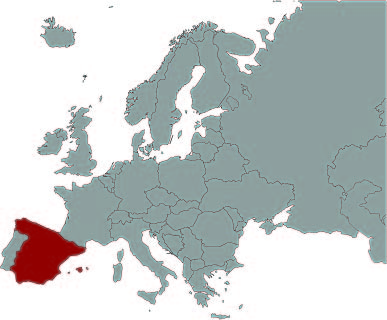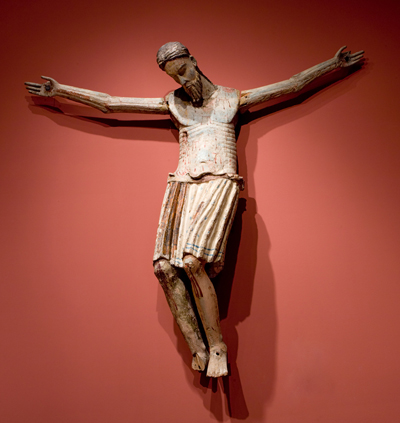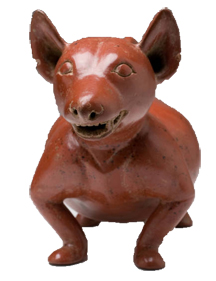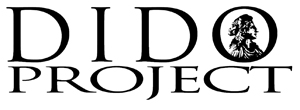

Romanesque (c. 1000 CE - 1200 CE)
Romanesque art portrayed figures differently from the classical styles used in Roman art. While classical figures depicted the human form realistically, Romanesque figures and clothing were more stylized. Christ displays characteristics of a Romanesque figure with his feet pointed downward and his arms and legs arranged angularly. Sculpture in the round, or sculpture that could be seen from all sides, appeared in the Romanesque period for the first time since the end of the Roman Empire.
Since art was created for the church as a teaching tool, artists and craftsmen remained unknown. This unknown artist carved Christ's torso and legs from one piece of wood, then attached the arms and head with nails. Imagine the challenges of carving this sculpture from a single block of wood.
Christ's anguish and torture, as depicted in this sculpture, was a new trait in art at this time. Before, art depicted Christ as regal, with a crown upon his head and showed him floating in front of the cross instead of nailed to it. During the Middle Ages, meditating on Christ's anguish as portrayed here served an important role among Roman Catholics.
Artist Unknown, Spanish
68 1/2 inches H; 75 1/2 inches W; 15 1/2 inches D
Given in loving memory of Lucy Ball Owsley by her son David T. Owsley
1991.005.000
1180-1192 Third Crusade.
1280 Eyeglasses are invented in Italy.
1337-1453 One Hundred Years War between the French and English.
1347 Black Plague begins in Europe.




